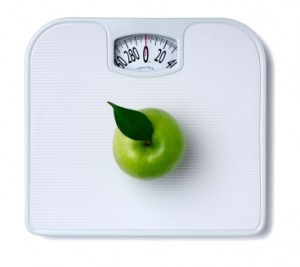 The sweat beads trickle down your forehead until they reach your chin and fall to the ground; the tension is releasing, serotonin flowing and heart racing. You reach for your ice-cold water for a sip and internally applaud yourself for a great workout.
The sweat beads trickle down your forehead until they reach your chin and fall to the ground; the tension is releasing, serotonin flowing and heart racing. You reach for your ice-cold water for a sip and internally applaud yourself for a great workout.
What does exercising have to do with being a productive Muslim? Firstly, your body is an amanah (trust) and you are required to maintain it, not just by nourishing it, but also by keeping it in good working order. Consequently, you will have the health and energy to be proactive and productive. To move comfortably during workout, you may consider having these workout clothes for women and men.
There are many facts, theories and myths out there on exercise; but the most important point to remember is the infamous motto “just do it!”. InshaAllah this article will serve to highlight some basics of exercise.
Now, as we delve into the crucial elements of a well-rounded fitness regimen, it’s essential to consider three key aspects: flexibility, strength training, and cardio. If you’re passionate about fitness and aspire to become a personal trainer, mastering these components will not only enhance your own workouts but also equip you with the knowledge to guide others on their fitness journeys.
Flexibility
Flexibility is essentially the stretching of the areas you will be working on. It is an important part of preparing your body for your workout. Stretching can be considered the ‘wudu’ to exercise as it’s an essential prerequisite to your workout and it is a sequential process. This component will take about 10 minutes. To properly stretch, you begin with:
- stretching your ankle complex (your calves),
- then stretching your quadricep hips (in a kneeling quad position, to stretch the front of the thigh muscle),
- followed by the hip (standing hip stretch),
- the chest,
- and finally, the back.
After your flexibility stretches are completed, it’s time to move on to strength or resistance training.
Resistance Training
Resistance training is exercise that causes the muscles to contract against an external resistance. In other words, an outside force that challenges your muscles. This outside force can be anything from your own body weight, to dumbbells, to various pieces of Plate-Loaded Workout Equipment.
Resistance training should be done 2-4 times a week from anywhere between 20-60 minutes. Total body format workouts are ideal. Total body workouts encompass utilizing all of the muscles of the upper and lower extremities as well as the core. Meaning, you would want to try to do as many exercises that encompass several muscle areas simultaneously. For example, a squat-curl-press or a pushup-row. Within all these exercises, your core is also being utilized. Your core is the area of your abdominals and lower back (imagine taking ‘Saran wrap’ around your waist from your bottom rib to your hip – that is your core). For further core isolation you could integrate other exercises like a plank, a reverse crunch, or a side plank, along with your total body exercises.
For any given muscle group area, you would do 1-2 exercises for that area, in repetition: that would then be considered a full set. Repetitions should be 10-20 reps on each exercise or side. You should do 1-3 sets of each exercise or muscle group area. Try not to rest between exercises. Popular programs like P90X, Insanity, and the Nadoona program entail total body workouts. Resistance training actually has a greater effect on your metabolism than cardiovascular exercise, so don’t skip the weights.
Cardiovascular
It is ideal to do your strength training prior to your cardio workout. Why? Because the beginning of your workout is when you have the most energy.
Cardio should be done 3-5 times a week for about 20-45 minutes. Cardio should be intense enough to hit your target heart rate for an effective workout, this number, for many people, is usually somewhere between 135-160 beats per minute. Examples of cardio workouts include walking jogging, elliptical, biking, jump rope, spinning, zumba, etc.
Recovery
It is important to eat within 30-90 minutes after the exercise is completed to ensure you replenish all necessary nutrients for repair and recovery. As far as eating prior to exercise, you should eat a light meal about 30 minutes before exercise. It can be something as simple as a banana, apple, or smoothie; essentially something that will not make you feel sluggish and ranges anywhere from 200-300 calories. You should have something that does not make you feel nauseated, give you indigestion, or cause any other discomfort.
When is the Best Time to Exercise?
Is it better to exercise in the morning or in the evening? There is no right or wrong answer to this question: it depends on your energy, convenience level, and accessibility. Whenever you find that you are the most consistent and energetic, that will be the best time to exercise, period.
InshaAllah you found this article to be of benefit. Please leave a comment below if you have any questions pertaining to it.
About the Author:
via Zainab Ismail (Nadoona Weight Loss Director) and Nadine Abu-Jubara (Nadoona Executive Director).
Zainab Ismail has been in the health and fitness industry for over 20 years. She has trained thousands of fitness professionals worldwide. She runs a successful fitness and nutrition business in Manhattan. Zainab is called the ‘shaykha’ of the health and fitness world by her peers.



